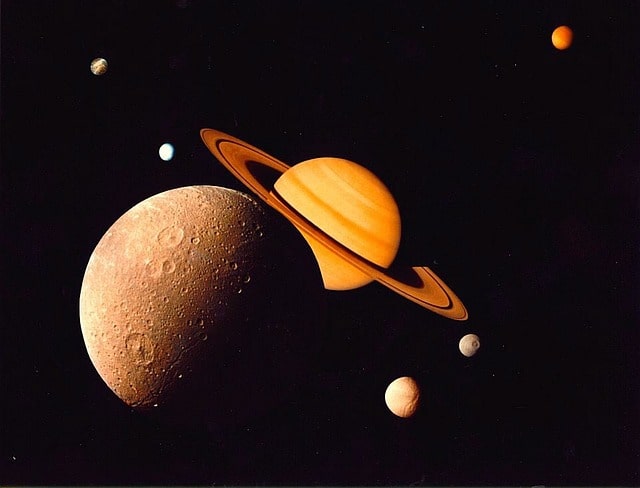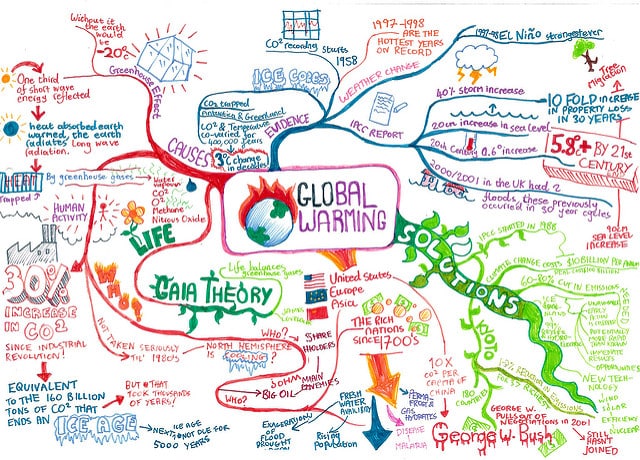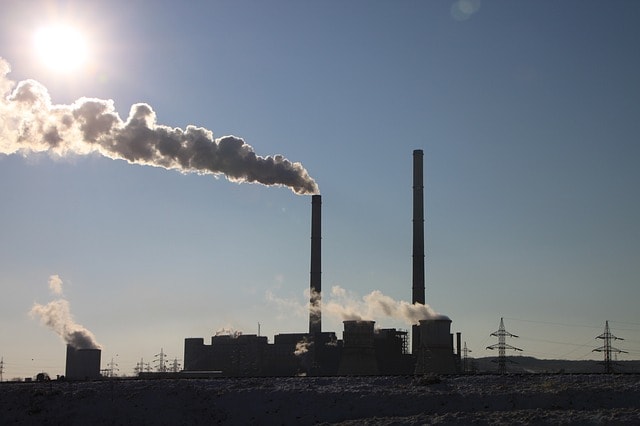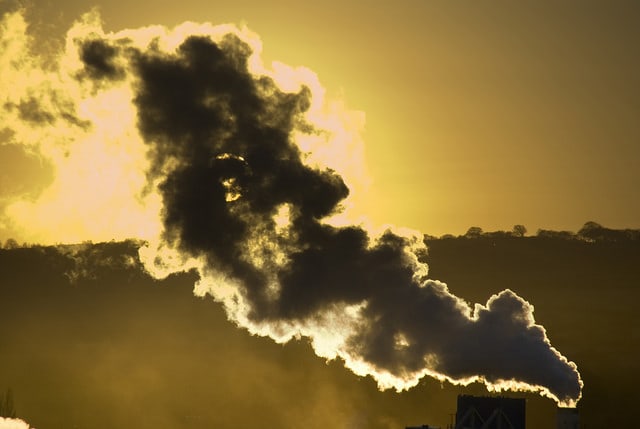Terrestrial Planets (Inner Planets): Definition and Interesting Facts

Planets are dark, astronomical bodies that are orbiting star or remains of the star that is big enough to have its own gravity, not big enough to create a thermonuclear fusion and clean neighborhood from planetesimals. Through the many years of studying planets and our Solar System, astronomers discovered that there are different types of planets that exist.
Planets can be divided into two main classifications:
1. Inner Planets (or Terrestrial Planets) – the planets inside of the asteroid belt. The inner planets are Mercury, Venus, Earth, Mars.
2. Outer Planets (or Gas giants) –the planets outside of the asteroid belt. The outer planets are Jupiter, Saturn, Uranus, and Neptune.
Terrestrial Planet is a planet that is made mostly of silicate rocks or metal, with a solid surface. Terrestrial planets are also known as Telluric or Rocky planets. The term “Terrestrial” is made of Latin word for Earth “Terra”. That is why terrestrial planets are also called “Earth-like” planets, due to the similarity in the structure of the planet Earth.
Terrestrial planets have the identical type of structure. The Central core is made mostly of iron with a silicate mantle around the core. Volcanism and comet impacts are the reasons why terrestrial planets have secondary atmospheres. Terrestrial planets can also have moons. Some of them have a few and some of them have no moon at all. Mars has two moons, Phobos and Deimos, Earth has only one moon, while Mercury and Venus have no moon.
There are many terrestrial planets outside of our Solar system. But the most of the planets that are detected outside of our Solar system are gas giants because they are much easier to notice. Kepler space mission helped scientists to spot hundreds of potential terrestrial planets since 2005. Their masses are between the mass of Earth and Neptune. Those planets have been mostly called “super-Earths”.
Gliese 876d is a terrestrial planet that has mass 7 to 9 times that size of the Earth. Gliese 876d is outside of our solar system and it is located approximately 15 light years from our planet. Since 2007 at least 3000 candidate planets have been discovered. The smallest one of discovered terrestrial planets is Gliese 581e, and it has mass 1.9 Earth masses. But this planet is a very close to a star so life on it is very possible. A terrestrial planet that has been confirmed first was Kepler 10b. That planet has the mass of 4 Earth masses and it is located 460 light years from the Earth.
Classification of Terrestrial planets
- Silicate planets– the most commonly seen planets in the Solar system. Mostly formed of a silicon-created rocky mantle and iron core.
- Iron planets –a type of terrestrial planet but it exists only in theory. They are mostly made of iron with a small radius. Iron planets are close to a star, it is believed that they are formed in the area with a high temperature. Mercury can be this type of terrestrial planet. It has metallic core, equivalent to 60-70% of its mass.
- Carbon planets – also known as “diamonds planets”. Another theoretical type of terrestrial planets. They have a metal core which is bounded usually by carbon-based minerals. There are no examples of this planet in our solar system, but there are examples of carbonaceous asteroids.
- Coreless planets – This type also belongs to the theoretical type of terrestrial planets. These planets are formed by silicate rock but they don’t have metallic core. They are opposite of an iron planets. It is believed that coreless planets are formed far from their stars. There are no examples of coreless planets in our Solar system, but there are coreless asteroids and meteorites, and they are very common.
Description of Terrestrial Planets
There are 4 terrestrial planets in our Solar System- Mercury, Venus, Earth, and Mars.
Mercury
The smallest terrestrial planet in our solar system is Mercury. Mercury is approximately three times smaller than Earth. Having a thin atmosphere, temperatures on Mercury are oscillating between burning and the freezing. Mercury is mostly formed of iron and nickel and has an iron core. Mercury has a very small magnetic field, only 1 percent of Earth’s. Deep craters and thin layers of silicates are dominating Mercury’s surface. Due to its atmosphere and close distance to the Sun, life on Mercury, as we know it, cannot exist.
Venus
The second planet in our Solar system is a Venus. It is almost the same size as Earth. The atmosphere of Venus has thick, carbon monoxide that is very toxic. That thick atmosphere keeps heat inside of it, and that makes Venus the hottest planet in our solar system. Venus’s surface is dominated by volcanoes and canyons. It is very hard to imagine life as we know it on a Venus.
Earth
Earth is the third planet in our Solar system, and it is the largest terrestrial planet. Planet Earth is the only one that has liquid water on it. Earth has a rocky surface with canyons and mountains, and also core is metallic. Earth’s atmosphere contains water vapor, which is very helpful in moderating temperatures.
Mars
Mars is the planet with the largest mountain in our Solar system (78,000 feet or 23.7 km above the surface). Mars’s surface looks very old and it is filled with craters. The magnetic field of Mars is smaller than Earth’s magnetic field and that indicates that Mars has a solid core. Even though there is no life at Mars now, it is possible that Mars used to have life on it. There is evidence of methane, which can is produced by both, living and non-living developments. It is known that Mars had ice and water.
Interesting Facts About Terrestrial Planets
- The “Inner Planets” is another name for Terrestrial Planets due to their solar system orbit being close to the Sun.
- Scientists believe that Solar system was formed approximately 4.5 billion years ago.
- Neither one of the terrestrial planets in the solar system have a ring system. Scientists suspect that planets might have ring once, but they have disappeared eventually.
- Mars is a terrestrial planet that may have life in the past, but there is no any evidence of life on Mercury or Venus. Earth is the most convenient terrestrial planet for life.
- Every terrestrial planet in our Solar System has central core mostly made of iron. The layer after the core is “mantle”. Mantle is typically made from silicate rocks.
- Terrestrial planets orbiting other stars too. Documents from the Kepler mission suggested that there are up to 40 billion planets in the Milky Way that looks like the Earth.
- Terrestrial planets are also referred as “Rocky” planets.
- Mountains, craters, volcanoes, canyons are typical surface of Terrestrial planets.
- Earth is the largest terrestrial planet.
- Terrestrial planets rotate slower than Gas planets and that makes them more rounds at poles.
- Ceres and Pluto are dwarf planets that are similar to terrestrial planets. They have a solid surface.
- Jupiter’s satellites, Io and Europa, have core structure similar to terrestrial planets.
Terrestrial planets are planets that are the most convenient for the life as we know it. There are only 4 terrestrial planets in our Solar System, but there is life only on Earth. Since 2005 and the Kepler space mission outside of our Solar System, hundreds and hundreds of potential terrestrial planets, that are similar to the Earth have been spotted.
This raises a lot of potential questions and mysteries about life outside of Earth. Many space missions were planned in the future, and those missions might answer more questions about terrestrial planets. Who knows what can be found if we send manned missions and probes to other terrestrial planets.






